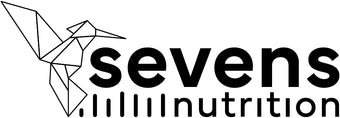The extraction of astaxanthin from Haematococcus pluvialis is a complex process due to the thick cell wall of this microalga, which requires mechanical disruption before applying solvents. Traditional methods involve multiple steps, such as cell disruption, alkaline treatment, solvent extraction, purification, and resuspension in oil. However, these methods have significant disadvantages, such as the use of large volumes of organic solvents, high extraction temperatures, and potential thermal degradation of the extracted molecules.
To overcome these challenges, innovative extraction methods are gaining ground thanks to their advantages: reduced solvent use, shorter extraction times, and higher yields.
Advanced Extraction Techniques
-
Microwave Assisted Extraction (MAE)
This method uses electromagnetic waves to disrupt the cell wall. MAE achieves high extraction rates thanks to heat and mass transfer gradients acting in the same direction.- Yield: 74% recovery of astaxanthin using acetone in 5 minutes at 75°C.
-
Ultrasound-Assisted Extraction (UAE)
UAE uses ultrasound to break up cells and release astaxanthin more efficiently than traditional methods.- Yield: Optimal recovery of 73% after 60 minutes of extraction with acetone at 45°C.
-
Supercritical Fluid Extraction (SFE)
This method uses supercritical fluids, such as CO2, to perform highly efficient extraction.-
Yields:
- 98.6% at 50°C and 550 bar.
- 87.4% at 65°C and 435 bar.
- 92% at 65°C and 550 bar.
-
Yields:
-
Enzyme-Assisted Extraction (EAE)
EAE uses enzymes such as pectinase and cellulase to break down the cell wall and facilitate the release of astaxanthin.- Yield: With 3% cellulase, 60% extraction was achieved at pH 5 and 65°C for 3 hours.
Challenges in Industrial Production
Despite advances in extraction techniques, the high cost of cultivating H. pluvialis biomass remains a significant obstacle to industrial astaxanthin production. This cultivation represents between 20% and 30% of total production costs .
The search for innovative and cost-effective methods for astaxanthin extraction is crucial for the sustainable growth of its production. Technologies such as MAE , UAE , SFE , and EAE are revolutionizing this field by offering more efficient and environmentally friendly solutions. However, reducing the costs associated with cultivating H. pluvialis biomass will be key to unlocking astaxanthin's true potential on an industrial scale.
At SevenS , we remain committed to innovation in astaxanthin production and extraction to deliver the highest quality products, supporting your well-being and promoting a more sustainable future.



